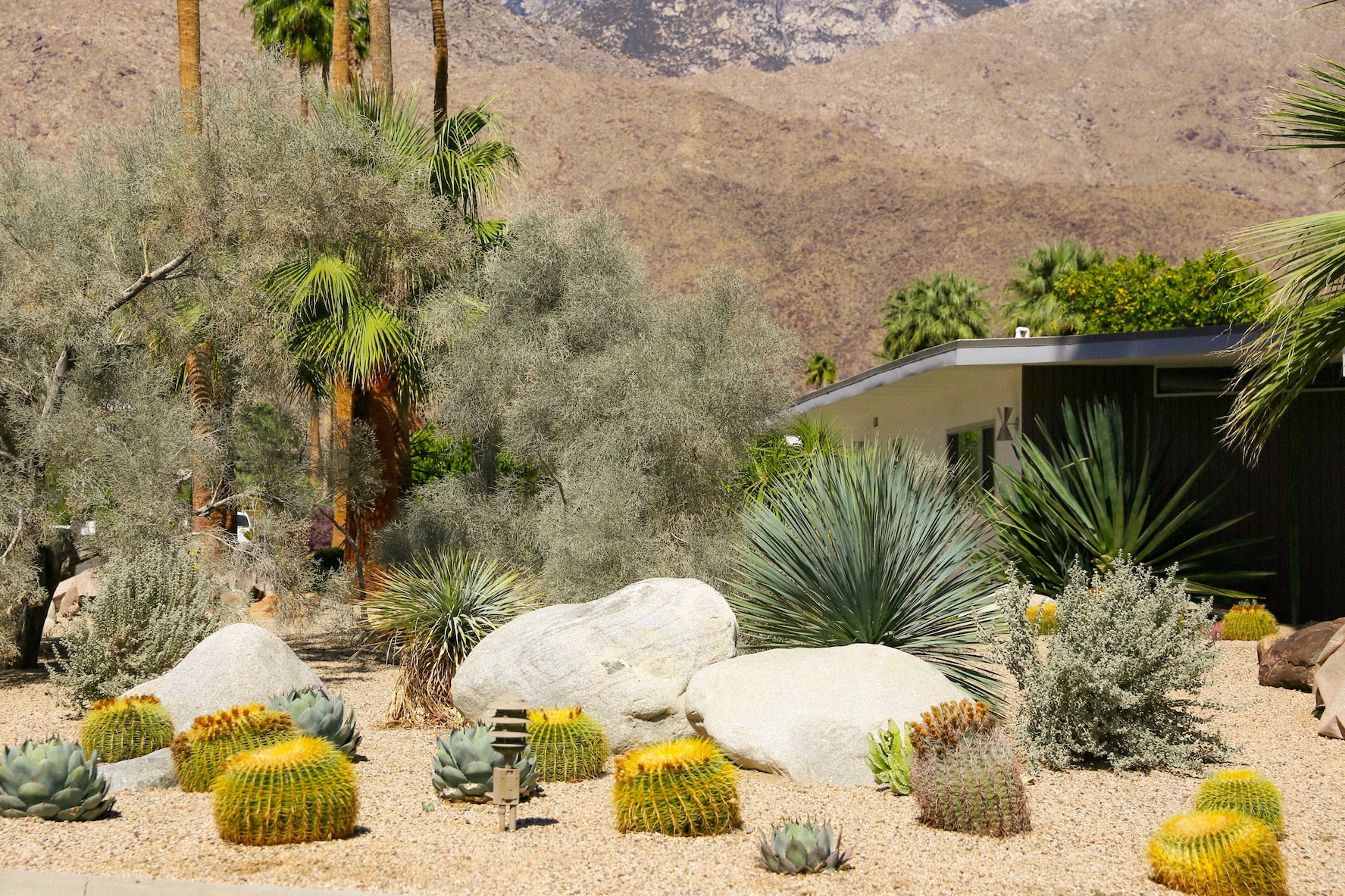
15 Jul 3 Summer Tips for Saving Water In Your Yard
By Andrea Peraza
As we all know, summer in the south can be brutal on our outdoor spaces. Oftentimes, the persistent heat causes homeowners to use a substantial amount of water to keep their spaces thriving. As temperatures are approaching record breaking heights this year, we thought we would share some tips for saving water in your yard.
Xeriscaping- Let Nature Help You Conserve Water
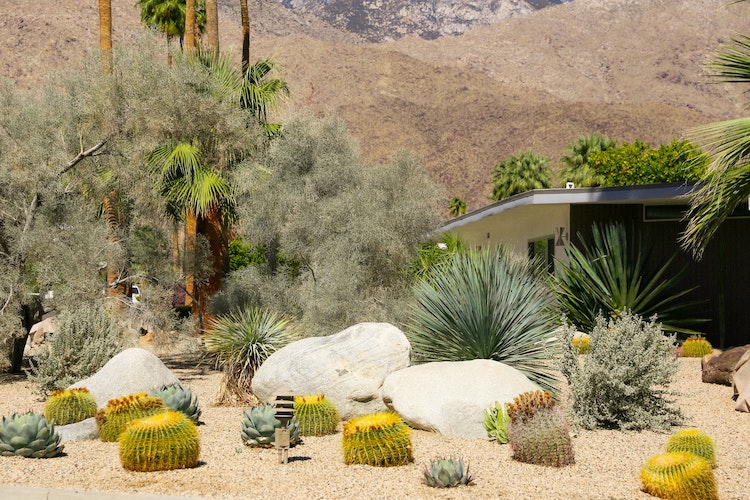
Xeriscaping is the practice of designing landscapes so that the need for irrigation is reduced or even eliminated. By using xeriscaping, you can effectively eliminate the need to water your lawn. According to the Denver Water Department, the method was developed as part of an overall initiative to encourage residents to conserve water during the dry season. However, this method can be applied anywhere with just a little bit of research!
Seven Steps of the xeriscaping method:
- Plan and Design: Plan your landscape! Take some time to determine which plants will work best and where they will grow.
- Soil Amendment: Take a look at your space and calculate an estimate of how much soil will be needed.
- Efficient Irrigation: If irrigation is still necessary, it can be done by hand or with a sprinkler system. However, be sure to water before 10am or after 6pm to avoid too much water from being evaporated.
- Mulch: Take into consideration the spaces where you are utilizing rocks or mulch. Make sure the rocks or gravel are a min of 2 in deep, whereas organic mulches should be at least 4 in.
- Plant Zones: Group plants with similar light and water requirements together, and place them in an area that matches their requirements.
- Alternative turf grasses: If you are in a very dry area, consider plant alternative Turf grasses! They are more likely to survive in drier climates and significantly reduce water waste.
- Maintenance: Every 6 to 8 weeks, your turf will need to be aerated and fertilized. Let the clippings fall to the ground and keep your grass height at approximately 3 inches. After you’re done, the plants that you do end up removing can be used for compost.
A few good xeriscaping plant ideas for those residing in Georgia:
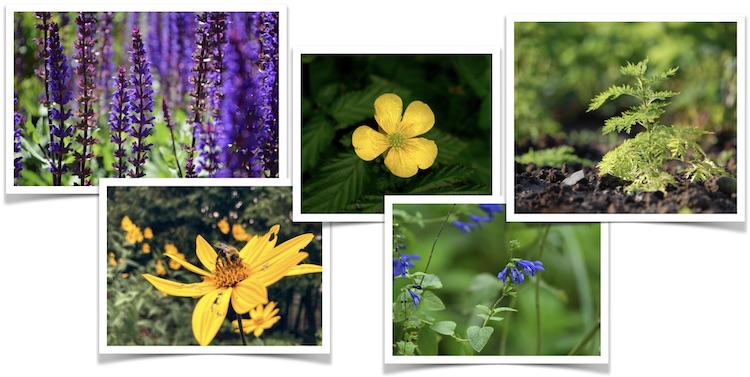
Images left to right:
- Salvia leucantha (Mexican Sage)
- Helianthus angustifolius (Swamp Sunflower)
- Potentilla megalantha (Cinquefoil)
- Salvia guaranitica (Anise Sage)
- Artemesia ‘Silver King’ (Silver King)
Lastly, it’s important to consider the costs of xeriscaping. All landscaping projects require some investment in time and/or money. However, the benefits can certainly outweigh the costs in the right scenario. According to National Geographic magazine, xeriscaping has been reported to reduce water usage by as much as 50 to 75 percent! In California, a region even tested out an incentive program for residents to convert from traditional landscaping to xeriscaping. After evaluating the data, the city’s water department estimated that the properties that chose to implement xeriscaping saved about 120 gallons of water a day. All of this to say, when it comes to learning about alternative water conservation methods, you are not alone! It is when we take our eco-conscious efforts seriously, and understand how our next project can save both our water bill and Mother Earth, that we can really begin to save water—no matter what climate you live in.
Rain Water Harvesting- The Future of Water Conservation?
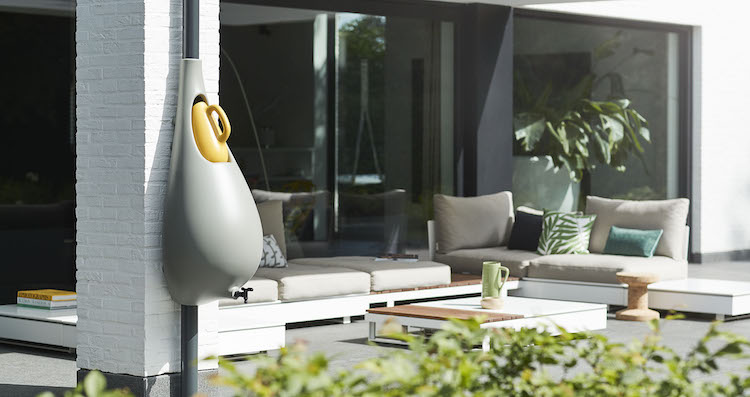
Rainwater harvesting involves collecting and storing rainwater for reuse instead of letting it run off into the ground or into drains, streams, or rivers. The use of natural resources responsibly, and minimizing ecological impact are among the many aspects of a green home. Alternative energy sources and solar power are often the focus of attention in home design, but water management and conservation are equally important. Many developing and under-developed countries still struggle to find uncontaminated drinking water sources, making rainwater management crucial in doing your part for the planet.
In addition to being wonderful for our planet, here are 5 great benefits of rainwater collection:
1. Reduces flooding and erosion
2. Reduces water bills
3. Reduces demand on ground water
4. Can be used for non drinking purposes
5. Can improve plant growth
Raindrop ,designed by Studio Bas van der Veer, accomplishes these goals without sacrificing style or aesthetics. The Raindrop rain barrel is an award-winning design that was first conceived in 2009 and easily beats the mundane rain barrel in both functionality and design. This sleek and elegant rain barrel fits virtually anywhere and also comes with a watering can at the top so you can do your gardening much more easily and sustainably. This contemporary design makes water management easy and effortless thanks to its bottom tap that allows you to connect a wide range of sized watering hoses. Whether you choose to utilize a traditional rain barrel, or a more modern model, know that the planet thanks you for your efforts!
Japanese Gardens: Beauty and Sustainability in One!
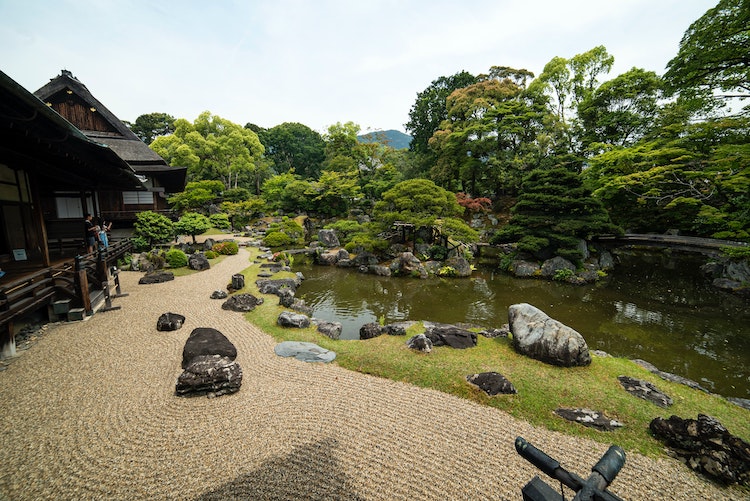
Throughout East Asia indigenous religions and philosophies have long influenced the nature-based design concepts of Japanese gardens. Japanese art and garden traditions were influenced by the monsoon climate and the spectacular geographical characteristics of East Asia. It is essential in Japanese gardens to explain nature and its processes through concepts such as feng-shui (fu-sui), ying-yang (in-yo), wabi sabi, and yugen (the sublime aesthetics of noh). Many of the arts, such as poetry and tea ceremony, were incredibly influential in forming Japanese garden traditions- most notably the dry landscape garden called karesansui and the tea garden known as chaniwa.
Choosing the right combination of rocks, trees, and flowers is crucial when constructing a Japanese garden. Harmony between these three elements is essential for a beautiful landscape. Choosing plants that require moderate to low watering is one of the primary ways to achieve a Japanese garden aesthetic in our arid climate. Luckily, if you choose to purchase plants from a nursery, they will always indicate what level of water they require. Because many Japanese and East Asian plants are successful in climates characterized by high rainfall, perhaps the best question to ask is “What low water-use plants are most compatible for Japanese gardens in our arid climate?” Here is a short list of plants you can incorporate that require low to medium levels of watering:
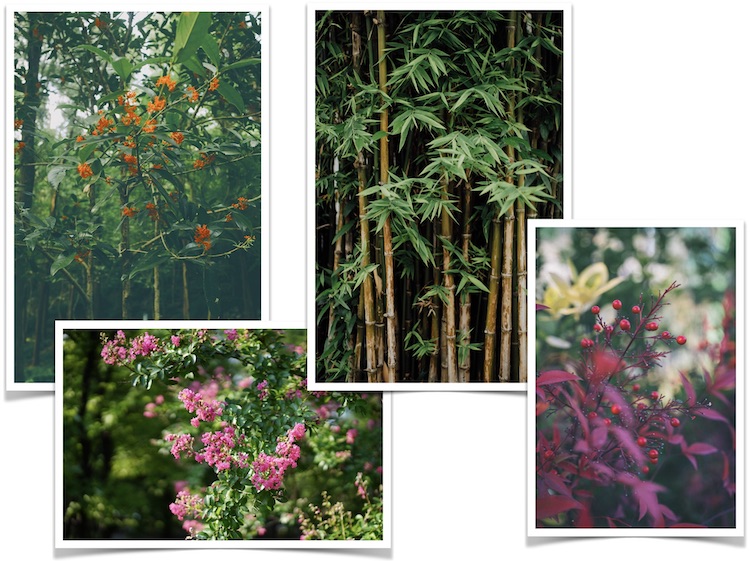
Images left to right:
- Osmanthus fragrans (Sweet Olive- takes medium water use)
- Lagerstroemia indica (Crape Myrtle)
- Bambusa oldhamii (Timber Bamboo)
- Nandina domestica (Heavenly Bamboo)
Additional low water plants:
- Podocarpus macrophylla (can be medium water use)
- Pittosporum tobira (Mock Orange)
- Rhaphiolepis indica (Indian Hawthorn)
Unfortunately, increasing costs of food, rising health risks, global climate change, and diminishing resources are contributing to some of the key urban issues we face today. In an effort to combat these issues, sustainable landscape design strategies are becoming increasingly important to urban areas. Urban landscapes should be designed in a sustainable manner to reduce waste and unnecessary consumption, preserve valuable resources, and contribute to the urban ecosystem instead of destroying it. For example, rainwater can be stored in cisterns during the summer and then used to water plants instead of being thrown away into storm drains. Additionally, you can turn your garden into a food-producing landscape by using edible plants, such as fruit trees, herbs, and vegetables. Whichever route you choose to go in your sustainable landscape design, know that it is a learning process. There are many methods you can consider incorporating. Find the right answer for you and your space and begin to reap the rewards of living sustainably.


No Comments